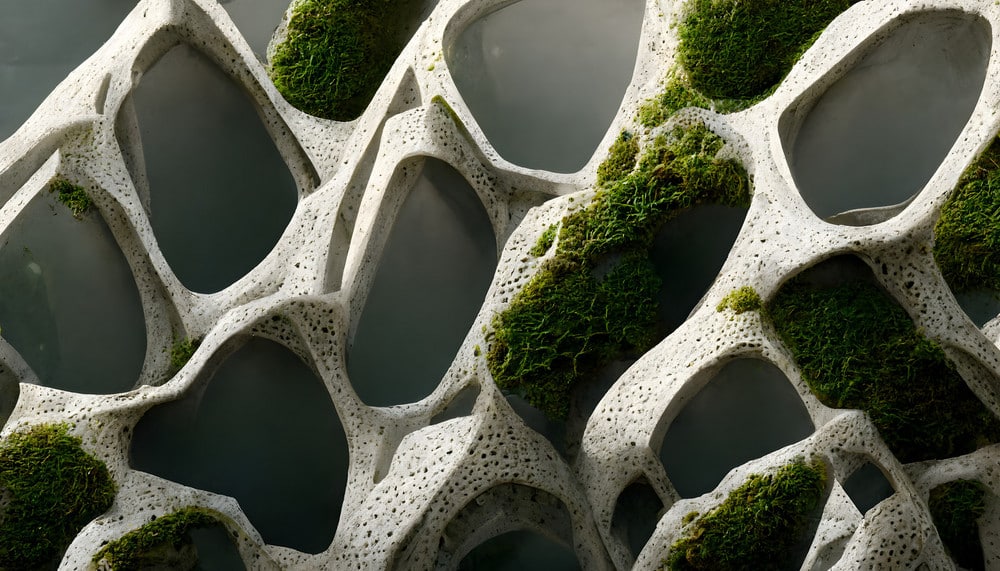How Nature-Inspired Design Impacts Productivity
Oliver Cooper July 22, 2025
Nature-inspired design is revolutionizing the way we approach work environments, and it’s no surprise why. Biophilic design integrates nature into spaces, boosting productivity, creativity, and well-being with scientifically backed benefits for a healthier workforce.
This article explores nature-inspired design trends, its impact on productivity, and research supporting elements like plants, lighting, and spaces.

What is Biophilic Design?
Biophilic design integrates nature elements into spaces, improving well-being, cognitive function, stress reduction, and productivity through natural connections.
Research has shown that natural environments can reduce stress levels, improve focus, and increase creativity. The Center for Biophilic Design states that biophilic elements like natural light, greenery, and water enhance both aesthetics and well-being.
How Nature-Inspired Design Enhances Productivity
- Improved Cognitive Function and Concentration:
A study found that workers in plant-filled environments showed a 15% productivity boost compared to those in barren offices. The presence of plants is thought to improve concentration and cognitive function by reducing distractions and enhancing mental clarity. Plants lower stress and fatigue, enhancing focus and improving performance on tasks that require attention and concentration. - Stress Reduction and Mental Well-Being:
Nature-inspired design reduces stress by lowering blood pressure and cortisol levels through exposure to plants and natural light. The incorporation of natural features helps employees feel more relaxed and less anxious, fostering a more positive and productive atmosphere. A 2019 study found that just five minutes of indoor nature exposure reduces stress and boosts relaxation. - Enhanced Creativity and Innovation:
Nature-inspired design doesn’t just benefit physical health; it can also enhance creativity. Studies suggest that natural elements in the workplace stimulate the brain and increase divergent thinking—the kind of creative thinking that involves generating multiple solutions to a problem. A study by Dr. Roger Ulrich, a leading researcher in the field of biophilic design, revealed that natural light and plants can boost creative problem-solving abilities and innovation in the workplace. Moreover, the introduction of natural textures, such as wood and stone, can encourage a more open and dynamic thinking environment. Workplaces designed with biophilic principles have been linked to higher levels of innovation and creative output, as they allow employees to feel more energized and inspired by their surroundings.
Key Trends in Nature-Inspired Design for Workspaces
- Natural Light and Open Spaces:
One of the most effective ways to bring nature indoors is through natural lighting. Studies show that exposure to daylight not only improves mood but also boosts energy levels and enhances concentration. Offices designed with large windows that allow for ample natural light can help maintain circadian rhythms, which are crucial for regulating sleep and overall well-being. It’s no surprise that businesses are increasingly incorporating open, well-lit spaces to keep employees engaged and alert throughout the day. In fact, a Human Spaces report found that 58% of workers who have access to natural light report feeling more productive and satisfied with their work environment. The shift towards open spaces with natural light is part of a broader trend to break away from traditional cubicles and create environments that promote collaboration and creativity. - Indoor Plants and Greenery:
Plants are one of the most straightforward ways to implement biophilic design. From potted plants to living green walls, adding greenery can drastically improve the atmosphere of any workplace. Research indicates that plants help reduce mental fatigue and improve concentration by providing a sense of calm and tranquility. Additionally, plants can enhance air quality by removing toxins and releasing oxygen, further contributing to a healthier environment. - Water Features:
Adding a water feature, whether it’s a small indoor fountain or a more elaborate water wall, can create a soothing ambiance that fosters focus and calm. The sound of flowing water has been shown to reduce stress and provide a peaceful backdrop for work, helping to enhance productivity in high-stress environments.
The Business Case for Nature-Inspired Design
The impact of biophilic design goes beyond individual productivity. Businesses are increasingly recognizing the value of creating environments that prioritize the well-being of employees. According to Global Workplace Analytics, organizations that invest in employee wellness and create environments that integrate biophilic principles see a significant return on investment. For example, companies with nature-inspired workspaces report improved employee engagement, reduced absenteeism, and lower turnover rates. This translates to a healthier, more loyal workforce that is more motivated to achieve organizational goals.
Additionally, incorporating nature-inspired design into a workplace can serve as a powerful recruiting tool. In an age where companies are competing for top talent, offering a workspace that promotes mental and physical well-being can make a significant difference in attracting skilled professionals.
Conclusion: Nature-Inspired Design is Here to Stay
Nature-inspired design is more than just a passing trend—it’s a practical and effective approach to enhancing workplace productivity and employee well-being. By incorporating elements like natural light, plants, and water features, businesses can foster a more relaxed, focused, and creative work environment. The growing body of research supporting the benefits of biophilic design makes it clear that the link between nature and productivity is strong and scientifically validated.
As companies continue to embrace this movement, nature-inspired design is likely to become a key component of the modern workplace, shaping the way we work, think, and interact in our professional lives. Whether it’s through increased cognitive function, reduced stress, or heightened creativity, the positive impacts of nature-inspired design are undeniable. For businesses looking to stay ahead of the curve, embracing biophilic principles may be the key to unlocking a more productive and innovative workforce.
References:
- Center for Biophilic Design. (2021). Biophilic Design: The Power of Nature in Our Spaces. Available at: https://www.biophilicdesign.com (Accessed: 22 July 2025).
- Harvard Health Publishing. (2020). How Nature Helps with Stress. Available at: https://www.health.harvard.edu (Accessed: 22 July 2025).
- International Journal of Environmental Research and Public Health. (2019). The Impact of Nature on Stress Relief: A Study of Biophilic Design Principles. Available at: https://www.ncbi.nlm.nih.gov (Accessed: 22 July 2025).







